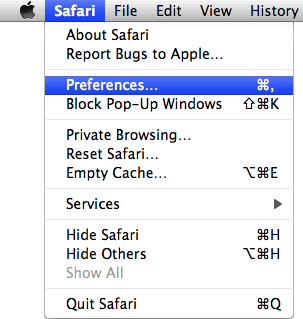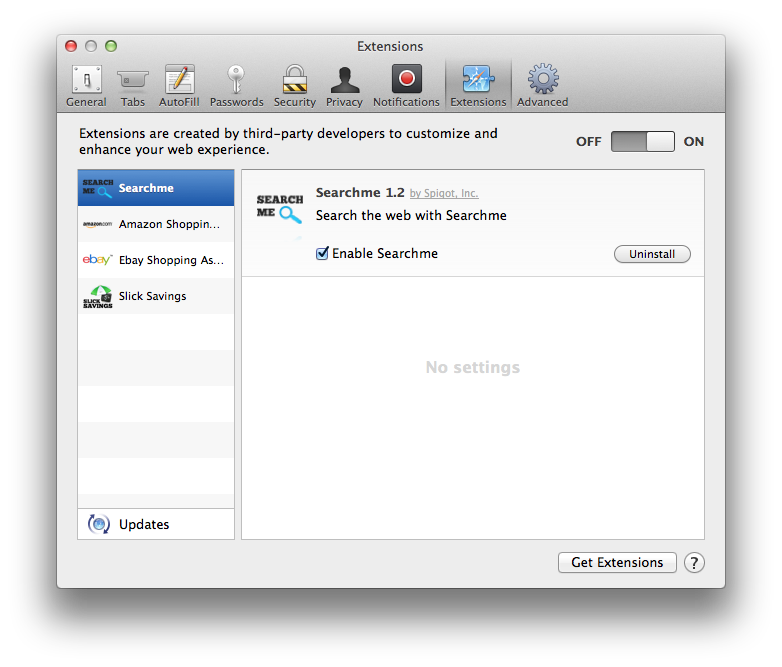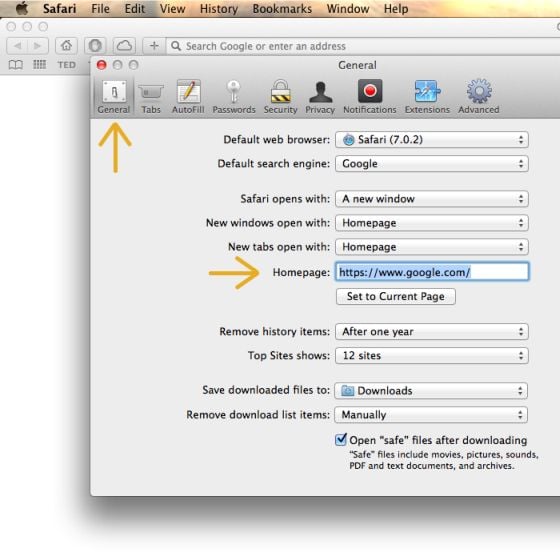If you are seeing random pop-up ads from Mckeeper.zeobit.com within Safari, Firefox and Google Chrome, then your Apple Mac OS X is infected with an adware or a potentially unwanted application.

The Mckeeper.zeobit.com pop-ups are caused by an ad-supported extension for Safari, Firefox and Chrome, which is distributed through various monetization platforms during installation. The malicious browser extensions is typically added when you install another free software (video recording/streaming, download-managers or PDF creators) that had bundled into their installation this adware program.
When an adware extension is installed on your computer, whenever you will open a new tab within Safari, Firefox and Google Chrome, an ad from Mckeeper.zeobit.com will pop-up. Other common symptoms include:
- Advertising banners are injected with the web pages that you are visiting.
- Random web page text is turned into hyperlinks.
- Browser popups appear which recommend fake updates or other software.
- Other unwanted adware programs might get installed without the user’s knowledge.
Mckeeper.zeobit.com is not a malicious domain itself, however cyber criminals are using an adware program to display ads from this domain, thus getting pay-per-click revenue.
You should always pay attention when installing applications because often, a software installer includes optional installs, such as this program that is causing the Mckeeper.zeobit.com redirect. Be very careful what you agree to install.
Always opt for the custom installation and deselect anything that is not familiar, especially optional software that you never wanted to download and install in the first place. It goes without saying that you should not install software that you don’t trust.
How to remove Mckeeper.zeobit.com pop-up ads from Apple Mac OS X
This page is a comprehensive guide, which will remove Mckeeper.zeobit.com pop-up ads from Apple Mac OS X, and any other adware program that may have been installed during the setup process.
Please perform all the steps in the correct order. If you have any questions or doubt at any point, STOP and ask for our assistance.
- STEP 1: Remove Mckeeper.zeobit.com pop-up with AdwareMedic
- (OPTIONAL) STEP 2: Remove Mckeeper.zeobit.com pop-up ads from Safari, Google Chrome and Firefox
STEP 1: Remove “Mckeeper.zeobit.com” pop-up with AdwareMedic
Adware Medic is a powerful tool which is designed to remove adware and browser hijackers from Apple Mac OS X.
- You can download AdwareMedic from the below link:
ADWAREMEDIC DOWNLOAD LINK (This link will open a new web page from where you can download “AdwareMedic”) - One you have downloaded AdwareMedic, please perform a scan as see in the below video:
(Optional) STEP 2: Remove “Mckeeper.zeobit.com” pop-up ads from Safari, Google Chrome and Firefox
If you are still experiencing issues with the “Mckeeper.zeobit.com” in Safari, Firefox or Chrome, we will need to manually check for malware. This step needs to be performed only if your issues have not been solved by the previous steps.
Remove from Safari (Mac OS X)
- From the Safari menu, select “Preferences“.

In the Safari Preferences window, click the “Extensions” tab. Find the “Mckeeper.zeobit.com” plugin, then click on the “Uninstall” button. This infection can add more than one extension, it is recommended that you remove all unknown extensions from Safari.

- Next, select “Preferences“, go to the “General” tab and change the “Default Search Engine” to Google. Then, in the “General” tab, find the “Home Page” and change it to “google.com”.

Remove from Chrome (Mac OS X)
- Click on Chrome’s main menu button, represented by three horizontal lines (
![Google Chrome's main menu button [Image: Chrome's main menu button]](data:image/gif;base64,R0lGODlhAQABAAAAACH5BAEKAAEALAAAAAABAAEAAAICTAEAOw==) ) .When the drop-down menu appears, select the option labeled Settings.
) .When the drop-down menu appears, select the option labeled Settings.
![Click on Settings button [Image: Click on Settings button]](data:image/gif;base64,R0lGODlhAQABAAAAACH5BAEKAAEALAAAAAABAAEAAAICTAEAOw==)
- Chrome’s Settings should now be displayed in a new tab or window, depending on your configuration. Next, scroll to the bottom of the page and click on the Show advanced settings link (as seen in the below example).
![Click on Show advanced settings link [Image: Click on Show advanced settings link]](data:image/gif;base64,R0lGODlhAQABAAAAACH5BAEKAAEALAAAAAABAAEAAAICTAEAOw==)
- Chrome’s advanced Settings should now be displayed. Scroll down until the Reset browser settings section is visible, as shown in the example below. Next, click on the Reset browser settings button.
![Click on Reset browser button [Image: Click on Reset browser button]](data:image/gif;base64,R0lGODlhAQABAAAAACH5BAEKAAEALAAAAAABAAEAAAICTAEAOw==)
- A confirmation dialog should now be displayed, detailing the components that will be restored to their default state should you continue on with the reset process. To complete the restoration process, click on the Reset button.
![Click on Reset button to restore Chrome to default settings [Image: Click on Reset button to restore Chrome to default settings]](data:image/gif;base64,R0lGODlhAQABAAAAACH5BAEKAAEALAAAAAABAAEAAAICTAEAOw==)
Remove from Firefox (Mac OS X)
- In the Firefox’s address bar type: about:support, then click on Enter.
- Click the “Reset Firefox” button in the upper-right corner of the “Troubleshooting Information” page.
![Reset Firefox to its default settings [Image: Reset Firefox to its default settings]](data:image/gif;base64,R0lGODlhAQABAAAAACH5BAEKAAEALAAAAAABAAEAAAICTAEAOw==)
- To continue, click on the “Reset Firefox” button in the new confirmation window that opens.
!['Click [Image: Click on the Reset Firefox button]](data:image/gif;base64,R0lGODlhAQABAAAAACH5BAEKAAEALAAAAAABAAEAAAICTAEAOw==)
- Firefox will close itself and will revert to its default settings. When it’s done, a window will list the information that was imported. Click on the “Finish“.




![Click on Settings button [Image: Click on Settings button]](http://malwaretips.com/blogs/wp-content/uploads/2014/11/reset-Chrome-1.jpg)
![Click on Show advanced settings link [Image: Click on Show advanced settings link]](http://malwaretips.com/blogs/wp-content/uploads/2014/11/reset-Chrome-2.jpg)
![Click on Reset browser button [Image: Click on Reset browser button]](http://malwaretips.com/blogs/wp-content/uploads/2014/11/reset-Chrome-3.jpg)
![Click on Reset button to restore Chrome to default settings [Image: Click on Reset button to restore Chrome to default settings]](http://malwaretips.com/blogs/wp-content/uploads/2014/11/reset-Chrome-4.jpg)
![Reset Firefox to its default settings [Image: Reset Firefox to its default settings]](http://malwaretips.com/blogs/wp-content/uploads/2014/11/reset-Firefox-1.jpg)
!['Click [Image: Click on the Reset Firefox button]](http://malwaretips.com/blogs/wp-content/uploads/2014/11/reset-Firefox-2.jpg)









